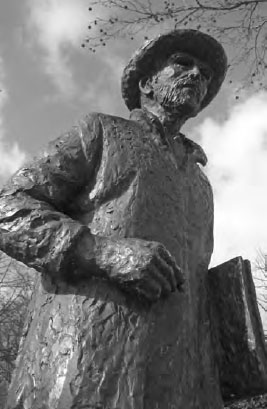
|
What was the mental ailment that tormented the painter Vincent van Gogh?
Major Mental Illnesses
Read more from
|
Vincent van Gogh (1853-1890) was a Dutch-born painter who is now considered one of the greatest artists of the nineteenth century. Little known in his own day, his work currently sells for millions of dollars. Van Gogh suffered from agonizing bouts of mental illness during which he repeatedly tried to kill himself. He eventually succeeded in 1890 at the age of 37. According to all reports, when he was not in the throes of a psychotic episode, he was calm, cooperative and completely focused on his painting.
Over the intervening century, many people have theorized about the nature of the mental illness that eventually killed him. While we can never be fully confident of any diagnosis made in the absence of the actual patient, van Gogh left a treasure trove of letters, mainly written to or by his devoted brother, Theo. From these letters, we can identify several major depressive episodes with psychotic features.
However, the psychiatrist Dietrich Blumer noted in a 2002 article that van Gogh also wrote of periods of excitement, increased energy, and excessive religious zeal. Although such symptoms might suggest manic episodes, Blumer concluded that van Gogh suffered from temporal lobe epilepsy, greatly exacerbated by his intake of absinthe, a popular but highly alcoholic beverage. It is also possible that he suffered from both illnesses: epilepsy and bipolar disorder. Tragically, his sister also suffered from mental illness (possibly schizophrenia) and was eventually confined to an asylum.

It is well known that the nineteenth century artist Vincent van Gogh suffered from mental illness. The exact nature of his suffering is still a matter of some debate (iStock).
